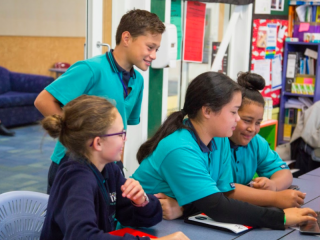It enables students to independently assess their own and other students’ progress with confidence rather than always relying on teacher judgment.
When students self and peer assess, they are actively involved in the learning process and their independence and motivation is improved.
Students who can look at their work, and judge the degree by which it reflects explicitly stated goals or criteria, can assess the quality of their work and revise it accordingly.
Professional learning resource
Download this slide presentation for further professional development. It identifies strategies to implement and maintain self and peer assessment in the classroom through suggested readings and classroom activities.
 Self and peer assessment
(PowerPoint 2 MB)
Self and peer assessment
(PowerPoint 2 MB)
References and readings
Absolum, M. (2006). Clarity in the classroom. Auckland: Hodder Education. pp 98–117.
Andrade H. and Valtcheva, A. (2009). Promoting Learning and Achievement through Self Assessment, Theory into Practice, Vol 48, pp 12–19.
Topping, K.J. (2009), Peer Assessment, Theory into Practice, Vol 48, pp 20–27.
Wiliam, D. When is assessment learning-oriented? 4th Biennial EARLI/Northumbria Assessment Conference, Potsdam, Germany, August 2008. Dylan Wiliam - Presentations
<< Classroom resources


